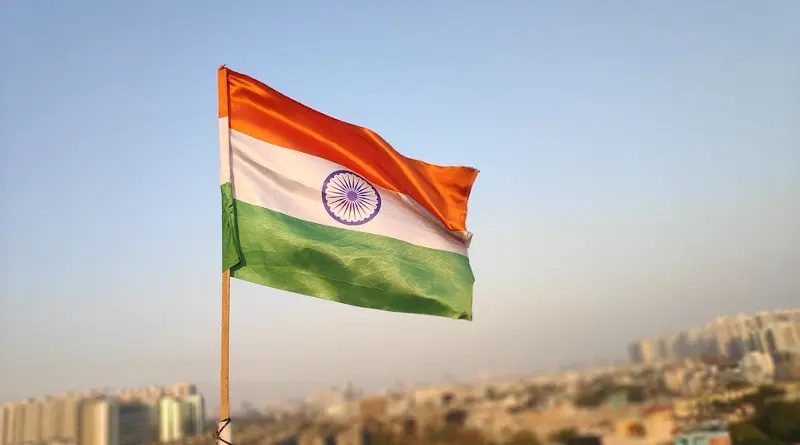India’s New Foreign Trade Policy: FTA To Gear Up Exports Through Building Global Supply Chain – Analysis
Till now, the main aim of Foreign Trade Policy (FTP) of India has been increase of exports through fiscal incentives and remission of duties. Given the unprecedented structural changes in global trade, the new FTP is likely to focus on FTA ( Free Trade Agreement ) as a driving force to expand exports through global supply chain trade. There are two factors which attribute to this. First, FTA is potential to expand scope for export of supply chain manufacturing across the borders under competitiveness. Secondly, thrust will be given to MSMEs to play an active role in value chain manufacturing for export. This is because they are potential to bolster supply chain manufacturing competitively , owing to low wage in India.
As the new year 2022 rolled in with the focus on new Foreign Trade Policy ( FTP) for 5 years, which has become overdue since past one year, global trade underwent major changes with US- China trade face-off and the unprecedented COVID 19 . The major deterrent to the global trade was supply chain constraint which constitutes three fourth of world trade and China being the doyen. Protectionism surged in USA – the largest consuming nation in the world. Global integration through supply chain trade and manufacturing is in retreat . Against these backdrops, FTA re-emerges the recourse for enhancement of exports.
FTA is on the lips of trade advisers to be focused in new FTP . Currently, multiple incentives are given to increase exports. Given the USA’s frowning on these incentives as non-WTO compliant and EU ‘s gradual insistence on green exports, India’s new FTP is likely to witness major structural changes. Trade analysts foresee the new FTP focus will shift to FTA as the new road map for expansion of exports than incentives. Once FTA, which was reckoned as damage to the domestic industry due to inverted duty structure, will re-emerge a new avatar for export growth in the new FTP. During 2022 and 2023, India is planning for three FTAs. FTA with UAE in January 2022, with UK in December 2022 and with EU in March 2023.
India has signed 13 FTAs and a number of agreements are under various stages of negotiations. India’s experience with FTA has been bitter-sweet. Even though these FTAs helped to enhance scope for exports , majority of the FTAs were beneficial to partner countries. According to ADB, India’s utilization of FTAs varies between 5 percent to 25 percent, which is one of the lowest in Asia
Nevertheless, Economic Survey portrayed a favourable picture of India’s benefits from FTA. Economic Survey 2019-20, unveiling the outcome, depicted overall increase of 13.4 percent in India’s exports of manufactured products and 10.9 percent of merchandise during 1993 to 2018.
ASEAN free trade within the region through AFTA ( Asian Free Trade Area) and EPA (Economic Partnership Agreement) and Korean FTA have proved great successes in boosting exports. The successes of Toyota ‘s Asian car model after the yen revolution and Japanese consumer electronics are the cases in point of AFTA .
Similarly, success of South Korean FTA to boost its exports can be lesson for India for its new FTP. After the Asian currency crisis in 1997, Korea adopted aggressive FTA policy. By this, it made a challenge for the domestic market oriented firms to build global supply chain network. Korean model suggests that FTA with partner countries act a key driver for formulation of global supply chain practices. As the trade increases through FTA, changing role of maritime logistics received greater priority. Therefore, the new FTP of India should also focus simultaneously the changing role of maritime logistic to go parallel with the FTA led export growth.
India should go for FTA with USA. It is the biggest destination for India’s exports. In 2020-21, export to USA shared one sixth of India’s total export , accounting for 17.5 percent. USA has been playing an important role for consumer goods export. It is the biggest export destination for ready made garments, marine products, diamonds and pharmaceutical, which are the major components s of India’s exports. Both World Bank and Peterson Institutes studies predicted significant gains for both USA and India, if a free trade agreement is concluded.
With tariffs done away under FTA, trade potential between the two countries will increase through trade related investment. USA has the advantages of technology and financial muscles and India has an edge in providing low cost of production base. FTA will encourage US investors to invest in India in gearing up supply chain industries, while supplying high tech products duty free as inputs.
Manufacturing of mobile phone by USA investors is the example. Apple Inc investment in India is the case in point. Simultaneous investment by Foxcon, the contract manufacturer of Apple phone, are the cases for supply chain manufacturing.
India is heading towards a new manufacturing dynamism embracing digitization and automation , which are component base industries. These industries require technology and skilled manpower. FTA with USA will leverage benefit for technology transfer through import of components and materials at low cost.

